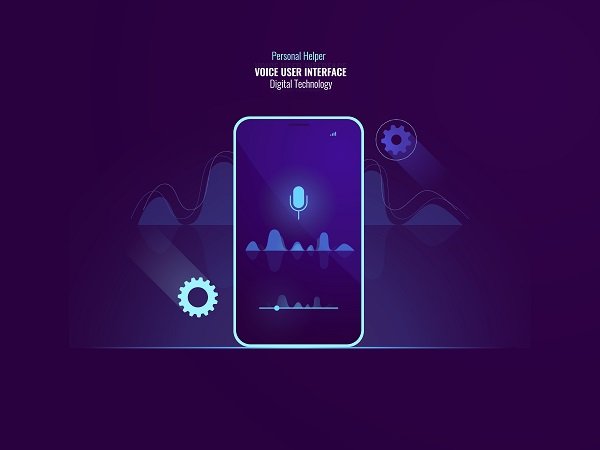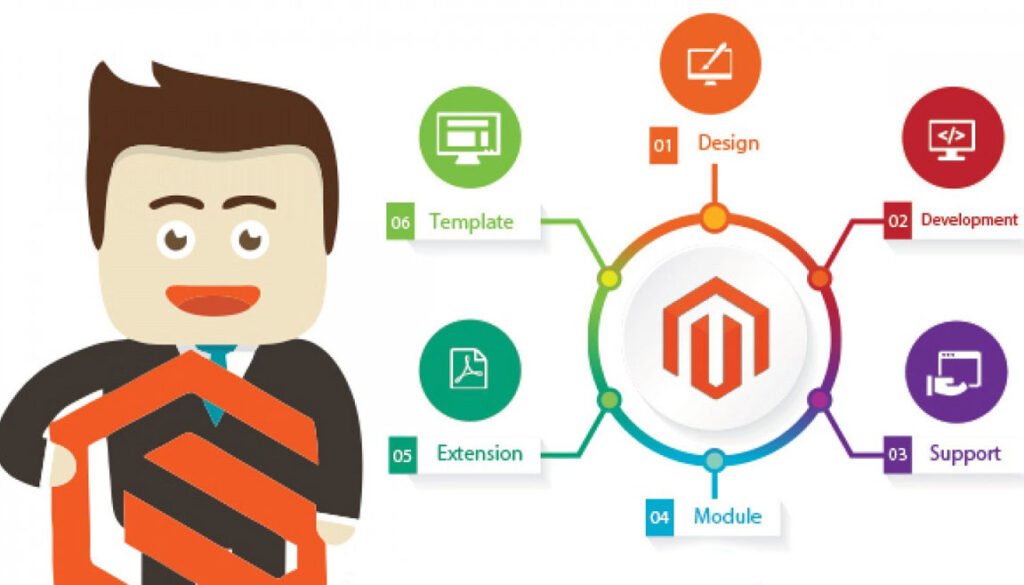Top 10 Strategies To Improve Your Website User Experience

In today’s digital age, where online presence is crucial for businesses, the user experience (UX) on your website plays a significant role in attracting and retaining visitors. A positive user experience not only increases customer satisfaction but also drives engagement, conversions, and brand loyalty. To achieve this, it is essential to focus on enhancing the overall user experience on your website.
In this article, we will explore some key strategies that help you create an exceptional user experience and keep visitors coming back on your website.
Contents
- 1. Use Intuitive Navigation
- 2. Make Responsive Design For Ensuring a Seamless Experience Across Devices
- 3. Enhance Loading Speed
- 4. Create Clear And Engaging Content
- 5. Use Consistent Branding
- 6. Make Conversion Process Streamlined
- 7. Incorporate Personalization and Customization
- 8. Make Website Accessible
- 9. Use Hyperlink Differentiation
- 10. Use Images On Website For Better Experience
- Conclusion
One of the fundamental aspects of a great user experience is intuitive navigation. Users should be able to easily find what they’re looking for on your website without confusion or frustration.
To achieve this, ensure that your navigation menu is clear, organized, and easily accessible from any page. Use descriptive labels and arrange the menu items logically to guide users through your site’s structure. consider incorporating search functionality to help users quickly locate specific information or products.
Make a list of potential scenarios that website visitors might encounter. This could involve visiting a landing page and making a purchase, looking up specific information, or getting in touch with you. Try to identify the steps in the sales process that can make it more difficult for the user as you go through each scenario.
It’s ideal to have multiple team members complete this task because those who are creating the website might already be familiar with all the shortcuts and won’t be able to identify the issues as quickly.
2. Make Responsive Design For Ensuring a Seamless Experience Across Devices
With the increasing use of mobile devices, responsive design has become crucial for providing an optimal user experience. Your website should adapt seamlessly to different screen sizes and resolutions, ensuring that users can navigate and interact with your content effortlessly on any device.
Implementing a responsive design not only improves usability but also positively impacts your search engine rankings, as search engines priorities mobile-friendly websites.
Use a fluid grid system that automatically adjusts the layout and proportions of elements based on the user’s screen size. This ensures that your website maintains its visual integrity and readability regardless of the device being used. Elements should resize, reposition, or stack as necessary to provide a visually appealing and user-friendly experience.
Test your responsive design across multiple browsers and devices to ensure consistent rendering and functionality. Different browsers may interpret CSS or HTML elements differently, potentially affecting the responsiveness of your design. Regular testing helps identify and address any compatibility issues, ensuring a seamless experience for all users.
3. Enhance Loading Speed
In today’s fast-paced world, users have little patience for slow-loading websites. Waiting too long for a website to load is one of the most annoying things that can happen to web users.
Research shows that even a one-second delay in page load time can significantly impact user satisfaction and conversion rates.
People are gaining access to material on several platforms all around the world because of the growth of mobile devices.
They anticipate a quick response for the content they are looking for whether they are browsing the internet at Starbucks or watching TV on their laptop. They typically bounce when they don’t get it. The user’s experience with a slow page load can be disruptive, frustrating, and frequently they simply don’t have the time to wait.
Optimize your website’s loading speed by,
- Compressing Images
- Reduce Your Redirects
- Eliminate Unnecessary Plugins
- Minifying CSS And JavaScript Files
- Leveraging Browser Caching
Regularly monitor your website’s performance using tools like Google PageSpeed Insights or GTmetrix and make necessary optimizations to ensure fast loading times.
4. Create Clear And Engaging Content
Compelling and well-structured content is a cornerstone of an exceptional UX. Ensure that your content is clear, concise, and easy to read.
Well-written content and potent graphics or images have a major impact on the perceptions and experiences of users. Again, rather than simply adhering to cultural standards, you should investigate your audience and look into visual trends like text to image that enhance your content.
Use headings, subheadings, and bullet points to break up the text, making it scannable and digestible. Incorporate relevant visuals, such as images, videos, or infographics, to enhance engagement and convey information effectively. Make sure your content is updated regularly to provide users with fresh and valuable information.
5. Use Consistent Branding
Consistent branding is a critical element in enhancing the overall UX on your website. It involves creating a cohesive and recognizable identity that aligns with your brand values and resonates with your target audience. By maintaining consistent branding throughout your website, you establish trust, familiarity, and professionalism, which positively impact user perception and engagement.
Use consistent messaging and tone of voice across all pages to create a cohesive UX. A strong and recognizable brand presence instill confidence in users and encourages them to explore further and engage with your website.
Users will associate your visual elements, messaging, and overall experience with your brand, strengthening brand recognition and loyalty.
6. Make Conversion Process Streamlined
If your website involves conversion actions, such as making a purchase or filling out a form, it is crucial to streamline the process. Reduce friction by minimizing the number of steps required and simplifying form fields. Provide clear instructions and error messages to guide users through the conversion journey.
Consider implementing guest checkout options, allowing users to make purchases without creating an account. Streamlining the conversion process enhances user satisfaction and increases the likelihood of successful conversions.
Keep your forms concise and straightforward, requesting only essential information. Minimize the number of form fields to reduce friction and make it easier for users to complete the conversion.
Use clear labels and provide guidance or tooltips where necessary to assist users in filling out the form accurately. Eliminate any non-essential or redundant fields that may discourage users from proceeding.
Make your call-to-action buttons clear, compelling, and easy to locate. Use concise and action-oriented language that conveys the desired action clearly. Ensure that the CTA stands out visually, with appropriate size, color, and contrast, to draw attention. Place the CTA in strategic locations, such as above the fold or at the end of relevant content, to maximize visibility and encourage users to take the desired action.
7. Incorporate Personalization and Customization
Personalization is a powerful tool for enhancing the UX on your website. Tailor content, recommendations, and offers based on user preferences, past interactions, or demographic information.
Implement features such as personalized recommendations, saved preferences, or recently viewed items to create a personalized browsing experience. Personalization makes users feel valued and understood, leading to increased engagement and conversions.
Gather user data and preferences through various means such as user accounts, surveys, or behavioral tracking. Use this information to understand user preferences, interests, and demographics. Leverage this data to personalize the content and recommendations users see on your website. By delivering relevant and targeted content, you can enhance user engagement and satisfaction.
8. Make Website Accessible
Creating an inclusive UX is not only ethical but also essential from a business standpoint. Ensure that your website is accessible to all users, including those with disabilities. Incorporate accessibility features such as alt text for images, captions for videos, and descriptive link text.
Use proper heading structure and semantic markup to facilitate screen reader navigation. Provide options for adjusting text size and contrast for users with visual impairments. By making your website accessible, you broaden your audience and demonstrate a commitment to inclusivity.
By concentrating on code, design, and testing, engineering teams and user experience designers should increase accessibility. Designers should pay attention to the contrast on the screen to make the text readable and avoid using only color to communicate vital information to users. When building their code to enable screen readers, keyboard navigation, and other assistive technologies with semantic HTML and ARIA, developers should follow best practices.
9. Use Hyperlink Differentiation
Hyperlinks are an integral part of website navigation, guiding users to different pages and content. However, the way hyperlinks are designed and presented can greatly impact the user experience. By implementing hyperlink differentiation techniques, you can improve usability, enhance accessibility, and ensure a seamless browsing experience for your website visitors.
Differentiate hyperlinks from regular text by using visual cues that create contrast. Use a distinct color for hyperlinks that stands out against the surrounding text. Choose a color that aligns with your website’s design, but make sure it is noticeably different and easily recognizable as a clickable link. Additionally, consider underlining hyperlinks or using a different font style (e.g., italics or bold) to further differentiate them.
Maintain a consistent hyperlink style throughout your website. Use the same visual cues and formatting for hyperlinks across different pages to create a predictable UX. Consistency helps users quickly identify and recognize clickable elements, reducing confusion and improving navigation efficiency.
By implementing these hyperlink differentiation techniques, you can create a more user-friendly and intuitive website browsing experience. Users will easily identify and interact with hyperlinks, navigate through your content with ease, and have a clear understanding of the website’s structure. Remember to test your hyperlink design and accessibility across different devices and browsers to ensure a consistent experience for all users.
10. Use Images On Website For Better Experience
Images play a crucial role in enhancing the UX on a website. They have the power to capture attention, convey information, evoke emotions, and create a visually engaging environment. When used strategically and thoughtfully, images can significantly impact how users perceive and interact with your website.
Images add visual appeal to your website, making it more aesthetically pleasing and captivating. Use high-quality, relevant images that align with your brand and resonate with your target audience. Well-composed and visually striking images can immediately capture attention and create a positive first impression.
Images have the ability to tell stories and evoke emotions more effectively than text alone. Use images to illustrate concepts, showcase products, or convey narratives. By selecting images that complement your content and tell a coherent story, you can create a richer and more immersive UX.
Remember to balance the use of images with other content elements on your website, ensuring a harmonious and cohesive design. Select images that are relevant, authentic, and resonate with your target audience. Regularly review and update your images to keep your website visually fresh and engaging. By leveraging the power of images, you can create a visually captivating and user-friendly experience that leaves a lasting impression on your website visitors.
Conclusion
Creating an exceptional UX on your website is crucial for attracting and retaining visitors, driving engagement, and achieving your business goals. By implementing intuitive navigation, responsive design, fast loading speed, clear and engaging content, consistent branding, streamlined conversion processes, personalization, accessibility, user feedback, and ongoing optimization, you can enhance the overall UX and leave a lasting impression on your audience. With the help of a professional web designing and development agency you can enhance your website’s UX. Remember, a positive user experience not only benefits your users but also contributes to the success and growth of your business in the digital landscape.









